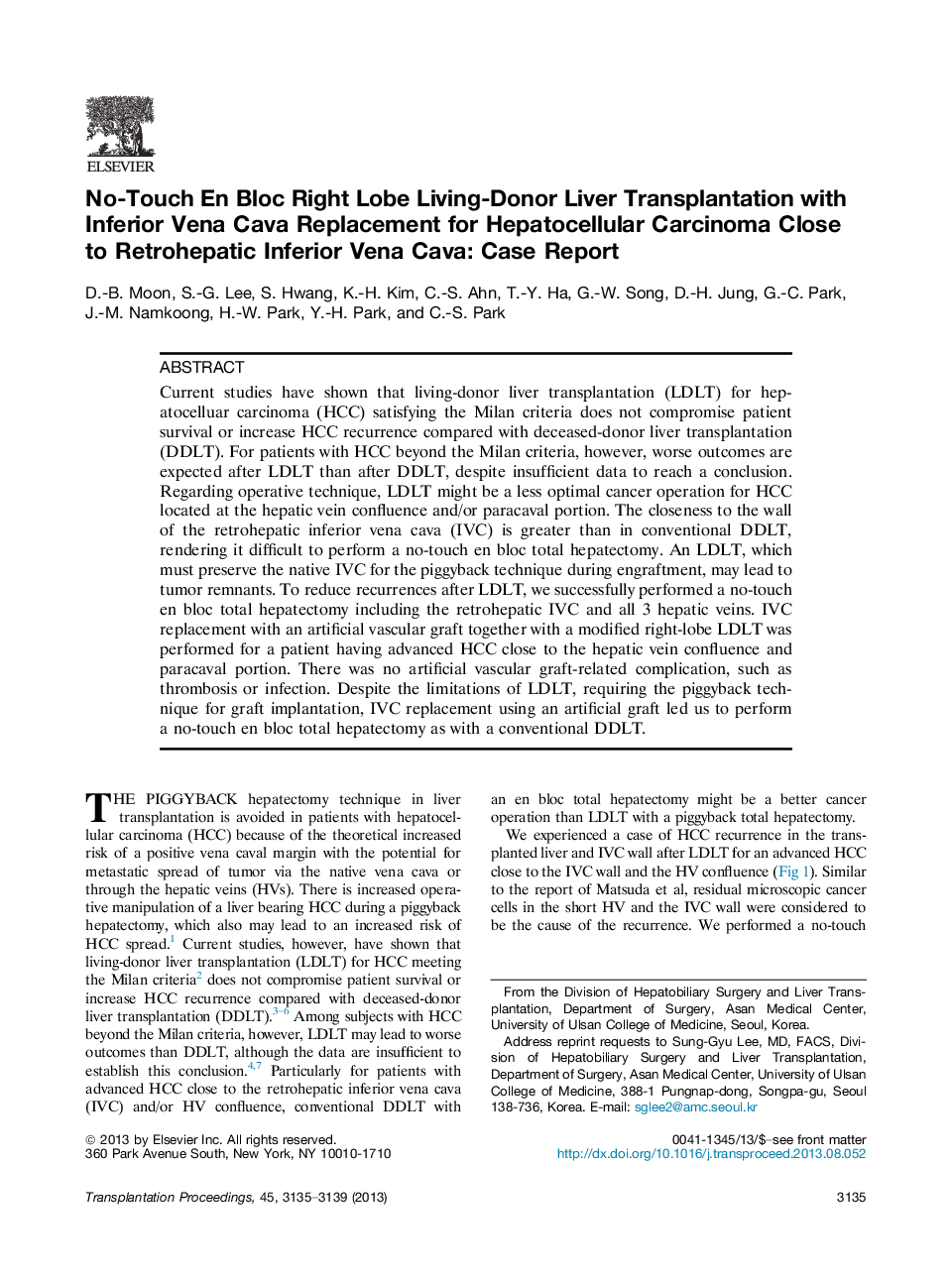| Article ID | Journal | Published Year | Pages | File Type |
|---|---|---|---|---|
| 6250025 | Transplantation Proceedings | 2013 | 5 Pages |
Current studies have shown that living-donor liver transplantation (LDLT) for hepatocelluar carcinoma (HCC) satisfying the Milan criteria does not compromise patient survival or increase HCC recurrence compared with deceased-donor liver transplantation (DDLT). For patients with HCC beyond the Milan criteria, however, worse outcomes are expected after LDLT than after DDLT, despite insufficient data to reach a conclusion. Regarding operative technique, LDLT might be a less optimal cancer operation for HCC located at the hepatic vein confluence and/or paracaval portion. The closeness to the wall of the retrohepatic inferior vena cava (IVC) is greater than in conventional DDLT, rendering it difficult to perform a no-touch en bloc total hepatectomy. An LDLT, which must preserve the native IVC for the piggyback technique during engraftment, may lead to tumor remnants. To reduce recurrences after LDLT, we successfully performed a no-touch en bloc total hepatectomy including the retrohepatic IVC and all 3 hepatic veins. IVC replacement with an artificial vascular graft together with a modified right-lobe LDLT was performed for a patient having advanced HCC close to the hepatic vein confluence and paracaval portion. There was no artificial vascular graft-related complication, such as thrombosis or infection. Despite the limitations of LDLT, requiring the piggyback technique for graft implantation, IVC replacement using an artificial graft led us to perform a no-touch en bloc total hepatectomy as with a conventional DDLT.
